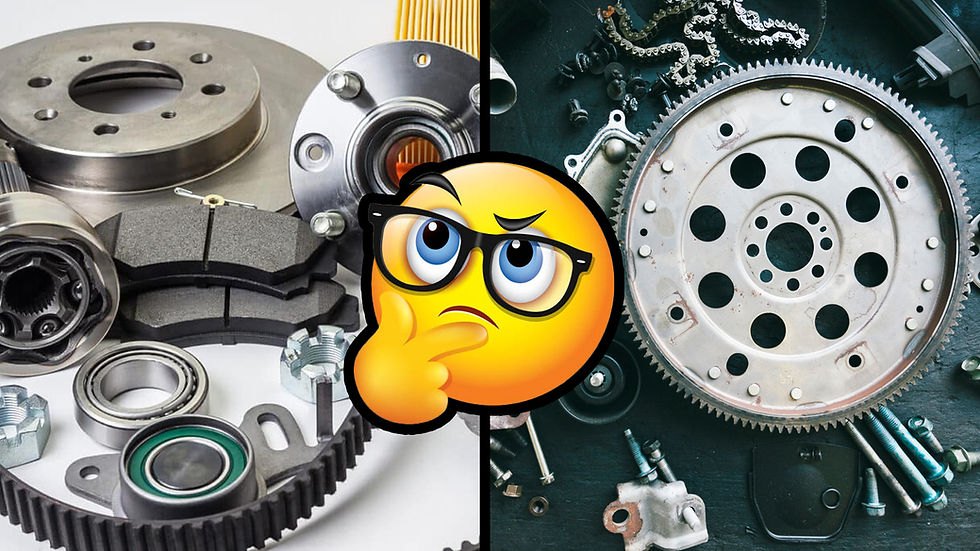How to Measure and Order Custom Hydraulic Hoses (Without Guesswork)
- PSI Hydraulics

- 6 days ago
- 3 min read

When it comes to keeping your hydraulic systems running efficiently, off-the-shelf hoses don’t always cut it. Whether you’re dealing with tight tolerances, unusual routing paths, or demanding environmental conditions, custom hydraulic hoses are the clear choice.
But ordering the right custom hose isn’t just about sending measurements scribbled on a napkin. It’s about understanding your system, matching specs precisely, and working with a provider who gets it right the first time.
Let’s break down how to measure, spec, and order a custom hydraulic hose that fits your needs — and avoids downtime disasters.
Why Go Custom Instead of Off-the-Shelf?
Standard hoses are built for generic use. But your machinery isn’t generic.
Custom hydraulic hoses:
Fit exactly into your equipment’s routing paths
Are built to match specific pressure ratings and temperature ranges
Support custom end fittings, thread types, and lengths
Prevent performance loss due to crimp failures, misalignments, or excess slack
In short? They perform better, last longer, and make maintenance a whole lot easier.
Step 1: How to Measure for a Custom Hydraulic Hose
When ordering a custom hose, precision is everything. Here's what you need to measure:
A. Hose Length
Measure from fitting end to fitting end (including the threads if you're using angled fittings)
For routing with bends, account for curve radius — don’t measure in a straight line
B. Hose ID (Inner Diameter)
Match the ID to fluid flow requirements
Undersized hoses create pressure drops and heat — oversized can waste space and increase cost
C. Hose Fittings
Identify fitting type: JIC, NPT, BSP, ORFS, SAE, etc.
Note thread direction and angle (straight, 45°, 90°)
If unsure, send a photo or sample to PSI — we reverse-engineer fittings in-house
D. Operating Environment
Will the hose be exposed to UV, chemicals, abrasion, or extreme temps?
Specify if you need protective sleeving, spiral wrap, or stainless steel fittings

Step 2: Matching Hose Specs to System Needs
Every hydraulic system operates differently. A perfect custom hose balances:
Flow rate (dictates ID)
Operating pressure and surge pressure
Fluid type compatibility
Flexibility requirements (tight bends = higher bend radius rating)
Safety factor (usually 4x operating pressure)
Tip: Never guess pressure ratings. When in doubt, go one grade higher.
Step 3: What to Include in Your Order
When sending an order or quote request to a supplier like PSI Hydraulics, include:
Hose type and material
ID and length (in inches or mm)
Fitting type and angle (both ends)
Pressure rating or system operating pressure
Environmental considerations
Quantity needed
Application (optional, but helpful)
Still unsure? PSI offers free consultations — just send a photo, and we’ll walk you through it.
Common Mistakes (and How to Avoid Them)
Let’s be real — a lot can go wrong with hoses. Here are the top issues we see, and how you can sidestep them:
Wrong fitting type: Leads to leaks or total incompatibility
Solution: Use calipers or send in a sample for exact match
Over-tight bends: Causes hose fatigue and rupture
Solution: Use the correct bend radius — PSI helps calculate it
Misjudging pressure requirements: Can cause failure under load
Solution: Specify both operating and max surge pressures
Ordering by “feel”
Solution: Get it measured or mocked up — PSI can help both remotely and on-site
Pro Tips for Ordering Custom Hydraulic Hoses
Bundle your order with other parts (fittings, sleeves, brackets) to avoid delays
Ask for test certification if your system is mission-critical
For field repairs, consider hose kits with spare fittings included
Label hoses in the field to make reordering easier later
Why PSI Hydraulics Is the Right Partner
At PSI Hydraulics, we don’t just build hoses — we engineer custom-fit hydraulic solutions that meet real-world demands.
In-house crimping and pressure testing
Decades of hydraulic experience across oil & gas, construction, and manufacturing
Fast turnaround — even same-day for emergencies
Precision from spec to final fitting
We’ve seen what happens when hoses fail. That’s why we build them to last.

Ready to Order a Custom Hose?
Whether you know your specs or need help figuring them out, we’ve got your back. Our team is standing by to build exactly what you need — with no guesswork, no wasted time, and no compromises.
Contact us to receive a custom quote today.
.png)



Comments